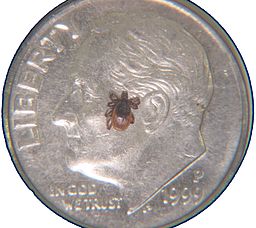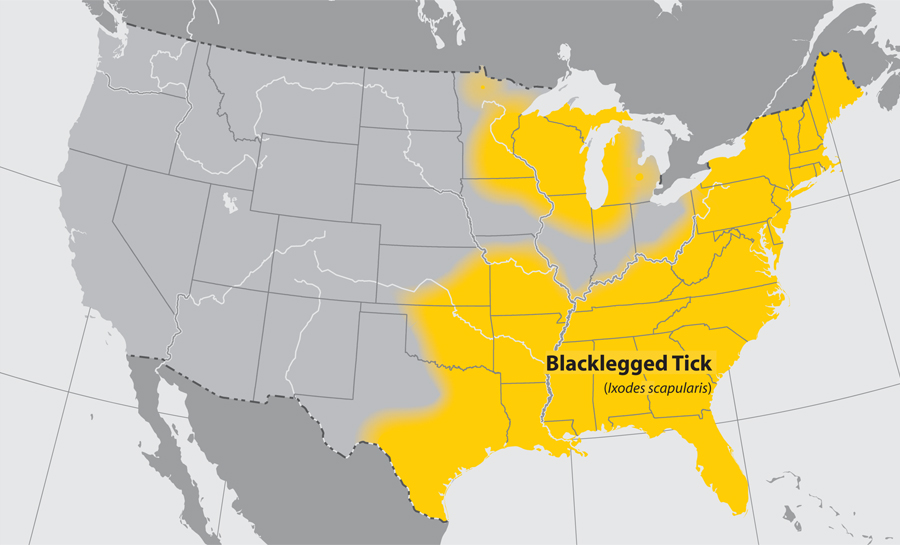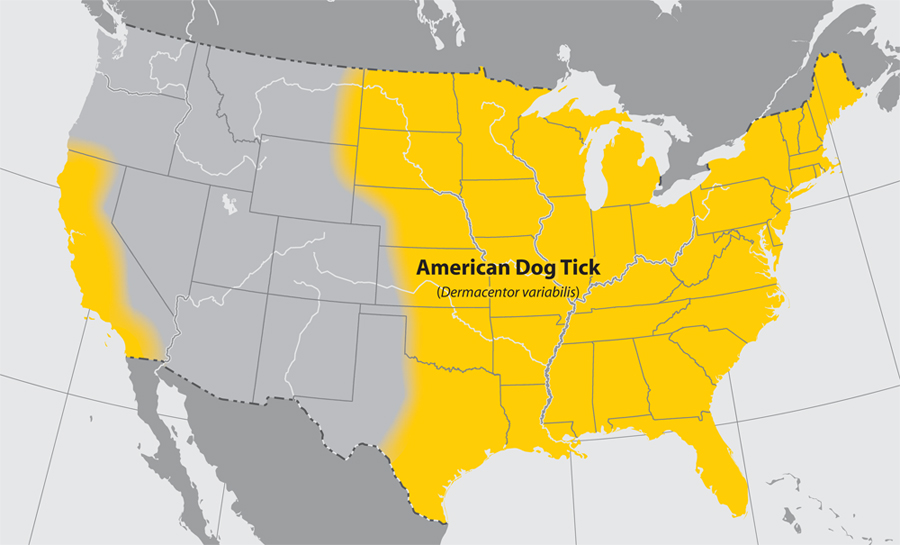 It is estimated that the tick species inhabits approximately 49% of the United States within 43 states. This means that the tick infestation covers 3110 counties throughout North America and has increased the risk and spread of Lyme Disease and other known pathogens. In 1991, for example, there were 10,000 reported cases of Lyme Disease; and in 2014, the number skyrocketed to over 33,000 reported cases.
It is estimated that the tick species inhabits approximately 49% of the United States within 43 states. This means that the tick infestation covers 3110 counties throughout North America and has increased the risk and spread of Lyme Disease and other known pathogens. In 1991, for example, there were 10,000 reported cases of Lyme Disease; and in 2014, the number skyrocketed to over 33,000 reported cases. Deer Tick: "Blacklegged Tick"
Blacklegged Deer Ticks are commonly found along the East Coast of the United States during the spring, summer and fall months. Adult deer ticks can search for a host year-round, even in the winter when temperatures are above freezing. Deer ticks attach themselves to warm-blooded hosts, including domestic animals, wildlife and humans. Some deer ticks do transmit Lyme Disease and other pathogens including babesiosis and Powassan Disease.

American Dog Tick: "Wood Ticks"
Commonly found east of the Rocky Mountains, and areas on the Pacific Coast, the female American Dog Tick is known to attach to dogs and humans. The highest risk of being bitten by American Dog Ticks occurs during spring and summer. Dog ticks can transmit Tularemia and Rocky Mountain Spotted Fever.

Lone Star Tick: "The Lone Star"
Lone Star Ticks have been discovered in the East and Southeastern regions of the United States. They are very aggressive towards humans and will bite given the chance. The Lone Star Tick is easy to detect, as the females have a white dot (the lone star) on their outer shells. They do transmit diseases including Tularemia, STARI and Ehlichiosis. In addition, they are known to spread red meat allergies to humans.

Western Blacklegged Tick
The Western Blacklegged Tick shares the same qualities found in the Eastern Blacklegged Tick. These ticks, however, are found along the Pacific, usually in California. The nymphs feed on lizards and small critters, reducing the risk of transmittable disease as they grow into adulthood. However, these western ticks do carry Lyme Disease and Anaplasmosis, similar to it's cousin the East.

Graphs courtesy of the Centers for Disease Control and Prevention.
